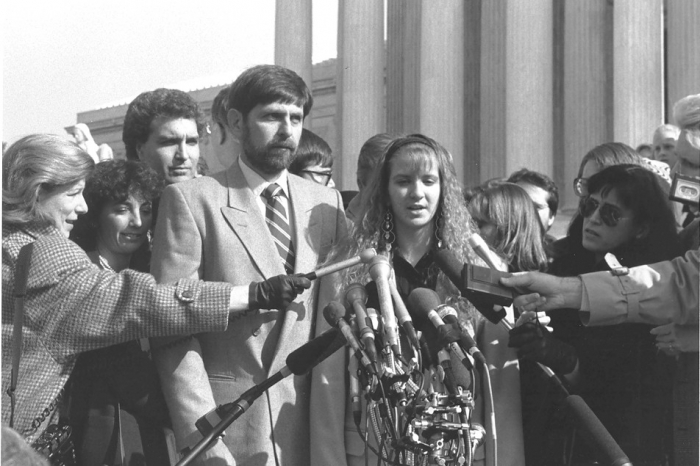The coercion test is one of a number of tests that the Supreme Court has established for ascertaining whether governmental practices violate the establishment clause of the First Amendment. It is most often used in public school cases.
Coercion test differs from other religious freedom tests
The coercion test is not yet as well known or as widely used as the three-pronged Lemon test, articulated in Lemon v. Kurtzman (1971) to determine whether a law has a secular legislative purpose, whether its primary effect is to advance or inhibit religion, or whether it leads to excessive entanglement between church and state.
It also differs from, but could arguably supplement, the endorsement test laid out by Justice Sandra Day O’Connor in Lynch v. Donnelly (1984), and other cases, to determine whether a governmental action appears to endorse a particular faith and thus make nonadherents feel like outsiders.
Kennedy’s opinon said students faced coercion in clergy prayer
The coercion test is usually associated with Justice Anthony M. Kennedy’s opinion in Lee v. Weisman (1992), invalidating the practice of public schools of inviting members of the clergy to deliver invocations and benedictions.
Kennedy observed, “Even for those students who object to the religious exercise, their attendance and participation in the state-sponsored religious activity are in a fair and real sense obligatory, though the school district does not require attendance as a condition for receipt of the diploma.”
Pointing out that most students consider graduation to be a key transition in their lives, Kennedy felt that those who attended would be psychologically coerced into approving of a religious practice to which they might object:
“The undeniable fact is that the school district’s supervision and control of a high school graduation ceremony places public pressure, as well as peer pressure, on attending students to stand as a group or, at least, maintain respectful silence during the invocation and benediction. This pressure, though subtle and indirect, can be as real as any over compulsion. Of course, in our culture standing or remaining silent can signify adherence to a view or simple respect for the views of others. And no doubt some persons who have no desire to join a prayer have little objection to standing as a sign of respect for those who do. But for the dissenter of high school age, who has a reasonable perception that she is being forced by the State to pray in a manner her conscience will not allow, the injury is no less real. There can be do doubt that for many, if not most, of the students at the graduation, the act of standing or remaining silent was an expression of participation in the rabbi’s prayer.”
Kennedy observed that adolescents are more susceptible
Observing the situation in this case to be different from one involving adults that might permit legislative prayers, such as those that the Court accepted in Marsh v. Chambers (1983), Kennedy observed, “Research in psychology supports the common assumption that adolescents are often susceptible to pressure from their peers towards conformity, and that the influence is strongest in matters of social convention.”
Scalia, Thomas thought true coercion required threat of penalty
Justice Antonin Scalia authored a dissent taking aim at the psychological component of Kennedy’s approach.
Scalia wrote, “A few citations of ‘research in psychology’ that have no particular bearing upon the precise issue here . . . cannot disguise the fact that the Court has gone beyond the realm where judges know what they are doing. The Court’s argument that state officials have ‘coerced’ students to take part in the invocation and benediction at graduation ceremonies is, not to put too fine a point on it, incoherent.” Scalia argued, “The coercion that was a hallmark of historical establishments of religion was coercion of religious orthodoxy and of financial support by force of law and threat of penalty.” He saw no evidence of either in this case.
Justice Clarence Thomas reiterated his support for Scalia’s focus on legal coercion set out in Elk Grove Unified School District v. Newdow (2004).
Like Scalia, Thomas believed that the coercion prohibited by the First Amendment must result from force of law or threat of penalty. He suggested that the amendment might be interpreted to prevent government from establishing religion “by imbuing it with governmental authority” or by favoring one faith over another.
Professor Raymond C. Pierce has criticized judicial applications that have focused on psychological coercion because he believes they have been more divorced than other tests involving religious exercises from “consideration of traditional or historical secular purposes for religion being present in government activity” (2012, p. 186).
As of now, the test remains one of a number of such tests that the Court can apply in this controversial area.
John Vile is professor of political science and dean of the Honors College at Middle Tennessee State University. He is co-editor of the Encyclopedia of the First Amendment. This article was originally published in 2009.

